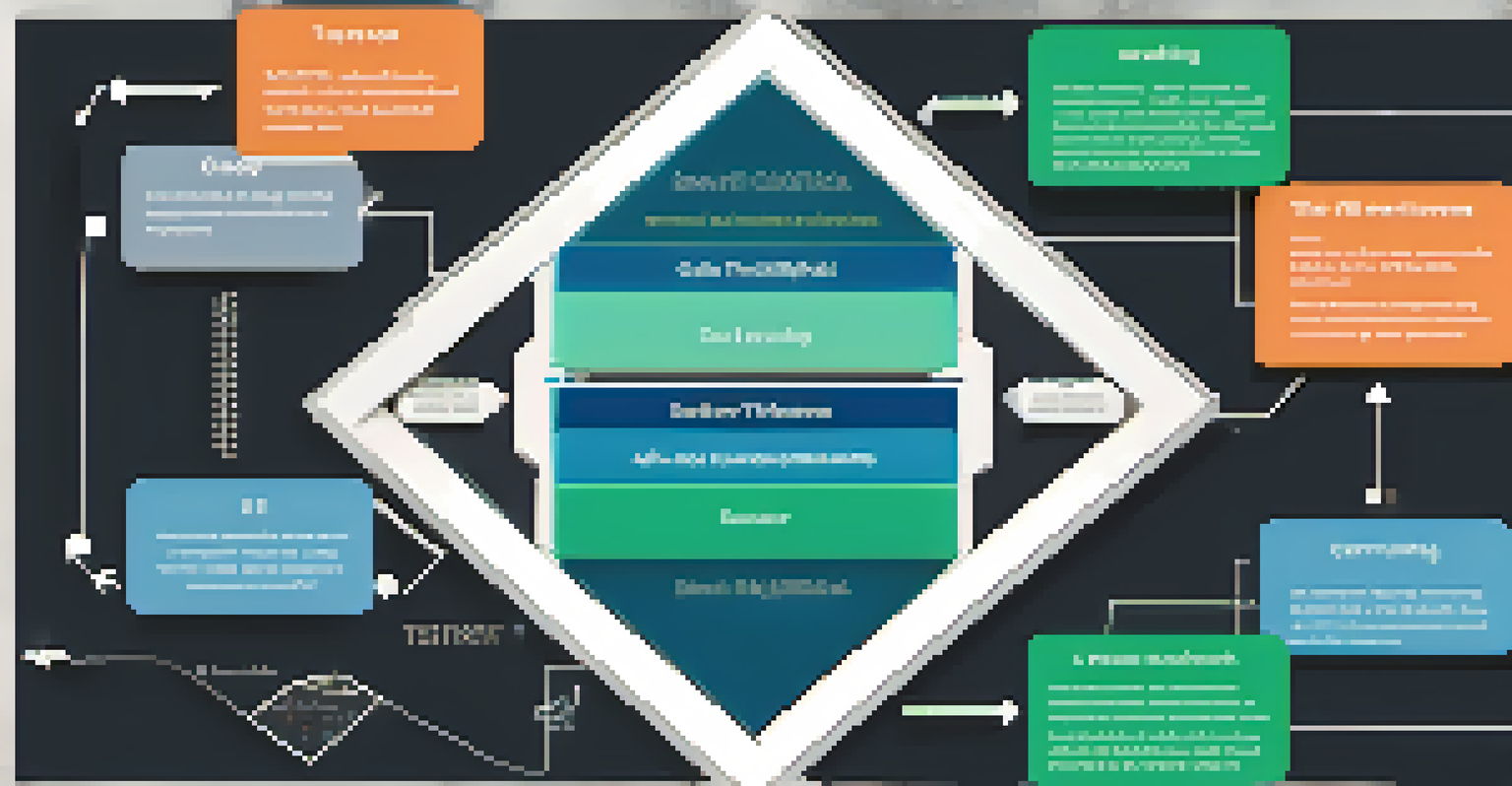How to Create Custom Smart Contracts on the Ethereum Platform

Understanding Smart Contracts and Ethereum Basics
Smart contracts are self-executing contracts with the terms of the agreement directly written into code. They run on blockchain technology, ensuring transparency and security. The Ethereum platform is the most popular for creating these contracts due to its robust infrastructure and supportive community.
Smart contracts are the digital equivalent of a notary public.
At its core, Ethereum functions like a decentralized computer that executes smart contracts. This allows developers to build applications without relying on a central authority. Think of it like a vending machine: you insert coins (data), and it dispenses a product (output) based on the code written within.
To get started, you don't need to be a blockchain expert, but a basic understanding of programming and blockchain concepts will be beneficial. Familiarizing yourself with Ethereum's ecosystem is the first step towards mastering smart contracts.
Setting Up Your Development Environment
Before diving into coding, you'll need to set up your development environment. This typically includes installing Node.js, which allows you to run JavaScript on your server, and Truffle, a popular development framework for Ethereum.

You can also use Ganache, a personal Ethereum blockchain that you can use to deploy contracts, develop applications, and run tests. It’s like having your own testing playground without any costs involved, allowing you to experiment freely.
Smart Contracts Simplified
Smart contracts automate agreements through code on the Ethereum blockchain, ensuring transparency and security.
Additionally, you'll want to set up a code editor like Visual Studio Code. This editor supports various plugins that can enhance your coding experience. With everything in place, you’re ready to start writing your smart contracts.
Writing Your First Smart Contract in Solidity
Solidity is the most widely used programming language for writing smart contracts on Ethereum. It resembles JavaScript, making it accessible if you have a programming background. The syntax is straightforward, allowing you to define functions and data structures easily.
Ethereum is a platform for building decentralized applications; it’s the future of programming.
A simple example of a smart contract could be a cryptocurrency token. You would define the token's name, symbol, and total supply within your contract. This serves as a great starting point to understand how smart contracts function in the Ethereum ecosystem.
As you write your contract, remember to include comments to explain your code. This will help you and others understand the logic behind your code later on, making it easier to troubleshoot and modify.
Testing Your Smart Contract Locally
Once your contract is written, it’s crucial to test it locally before deploying it on the main Ethereum network. This is where tools like Truffle and Ganache come in handy, allowing you to simulate transactions and detect any bugs.
Testing involves running various scenarios to see how your contract behaves, such as checking if functions are executing correctly. You can think of it like rehearsing before the big performance; you want everything to go smoothly without any surprises.
Setting Up for Development
Establishing a development environment with tools like Node.js and Truffle is essential for writing and testing smart contracts.
Don't skip the testing phase! It can save you from costly mistakes and ensure that your contract is secure and functioning as intended, providing peace of mind before going live.
Deploying Your Smart Contract on Ethereum
With your contract tested and ready, it’s time to deploy it to the Ethereum network. This involves using a tool like Truffle to compile your contract and then deploying it to a test network like Ropsten or Rinkeby before the main network.
Deployment requires some Ether, the currency used on the Ethereum platform, to pay for transaction fees. Think of it as buying a ticket to enter a concert; you need to pay to get in and enjoy the performance.
Once deployed, your contract will have its own unique address on the blockchain, making it accessible for users and other applications. Congratulations! You’ve just entered the world of decentralized applications.
Interacting with Your Deployed Smart Contract
After deployment, you can interact with your smart contract through a user interface or directly via command line tools. Using web technologies like JavaScript and libraries like Web3.js allows you to connect your web application to the Ethereum blockchain.
Creating a user-friendly interface makes it easier for others to interact with your contract. Consider it like building a storefront for your product; a well-designed interface invites more customers and enhances their experience.
Testing and Deployment Essentials
Thoroughly testing your smart contract locally before deploying it to the Ethereum network helps avoid costly mistakes.
Additionally, ensure that your contract is well-documented, allowing users to understand its functionalities. This transparency builds trust and encourages more people to utilize your smart contract.
Best Practices for Smart Contract Development
As you venture into smart contract development, adhering to best practices is crucial to ensure security and efficiency. Always conduct thorough testing and code reviews to minimize vulnerabilities.
Consider following established design patterns, like the checks-effects-interactions pattern, to prevent common pitfalls such as reentrancy attacks. It’s akin to following a recipe in cooking; precise steps lead to a successful dish.

Lastly, stay updated with the latest trends and developments in Ethereum and smart contract technology. The blockchain space is rapidly evolving, and keeping abreast of changes will help you maintain and improve your contracts.